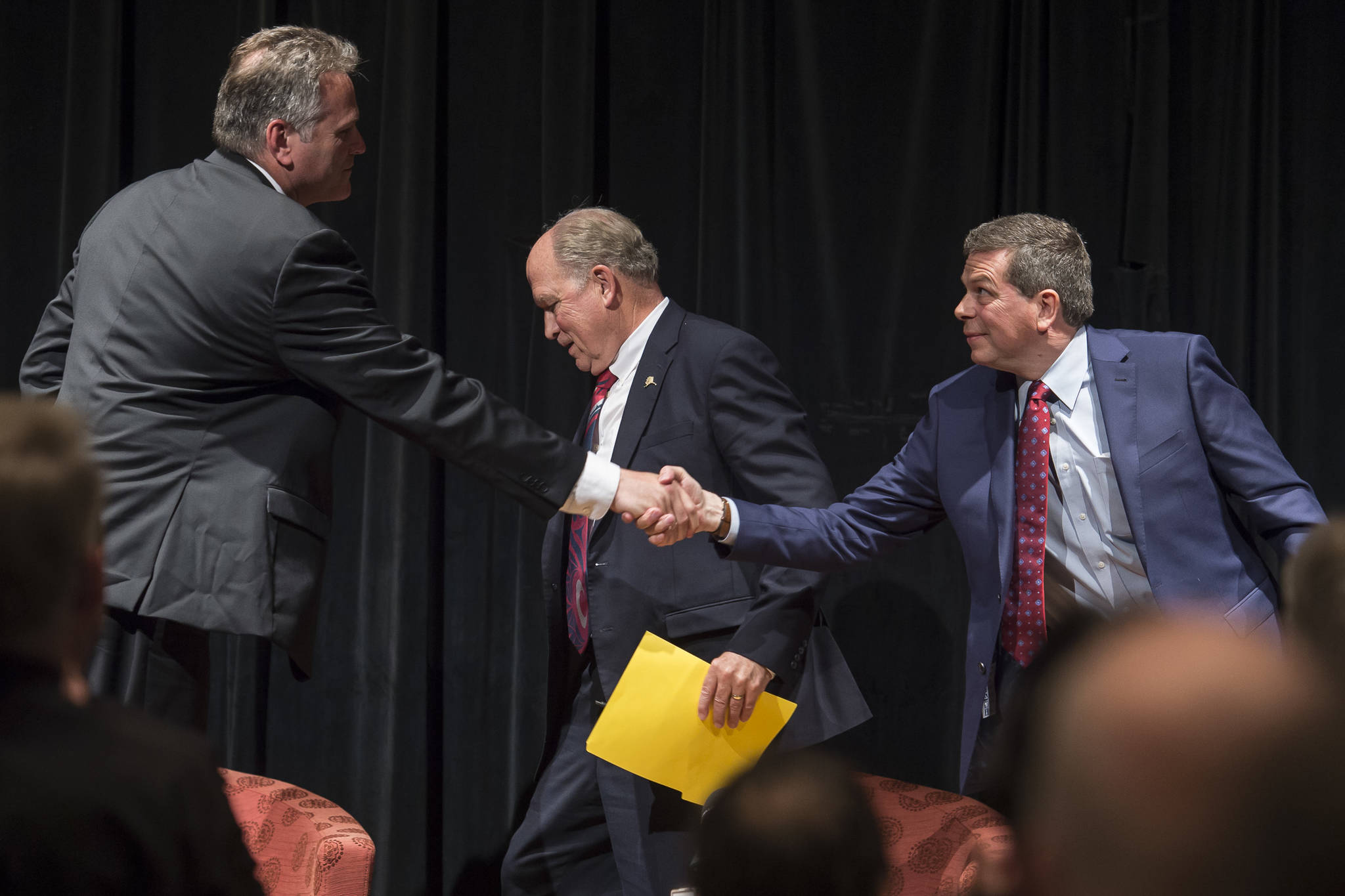The governor race between Mike Dunleavy and Mark Begich is tighter than ever.
A new tracking poll from Alaska Survey Research shows the two leading candidates almost dead even, with the decision possibly remaining in the hands of the state’s few undecided voters.
According to the poll, 42.5 percent of Alaskans support Dunleavy and 42.3 percent support Begich.
The Begich campaign, which has consistently trailed during the election, issued a press release stating that “momentum continues to build on Begich’s side.”
Asked about the poll, Dunleavy campaign manager Brett Huber said by email, “The only poll that counts is the one on November 6.”
A week and a half after he announced his withdrawal from the governor’s race, incumbent independent Gov. Bill Walker still holds a measure of support among voters. Just under 8 percent of Alaskans said they will vote for him.
Support for Libertarian candidate Billy Toien, polled for the first time by Moore, measured 3.3 percent. Slightly over 4 percent of Alaskans are undecided.
The poll of 500 likely voters was fielded between Oct. 26 and 29 using cellphones and landline telephones. The data was weighted to generate a representative sample of all Alaskans and has a 4.4 percent margin of error with a 95 percent confidence interval.
The poll was not funded by either campaign, said Ivan Moore, director of Alaska Survey Research, in a press release accompanying the poll results.
The poll also asked respondents if they had already voted, then asked who people had voted for. Among the 67 people who had already cast their votes, 34 said they had voted for Begich, 32 for Dunleavy and one for Walker.
Among the 433 people who said they will be voting later, 41.6 percent said Dunleavy, 41 percent said Begich, 8.8 said Walker, 3.8 percent said Toien, and 4.8 percent were undecided.
For the 39 people who said they will be voting for Walker, the person conducting the poll by phone informed them that Walker has dropped out of the race but will still appear on the ballot.
“Knowing this, if the 2018 general election for governor of Alaska was held today … for whom would you vote for governor?” the poll asked.
Of those 39 people, 20 said Begich, four said Toien, five were undecided and eight said they would still vote for Walker. None said Dunleavy. Most of the 39 had heard of the governor’s withdrawal from the race; only eight had not.
That question changed the results of the poll: When prompted that Walker had withdrawn, his support dropped to 2 percent. Begich’s support rose to 46.3 percent, and Dunleavy’s support was unchanged.
It is not yet clear whether the Alaska Survey Research poll is an outlier or represents a significant swing in the governor’s race. Since the summer, Dunleavy has consistently led in polls of Alaska’s governor’s race.
On Oct. 19, Walker declared to a crowd at the Alaska Federation of Natives conference that he was withdrawing from the race, saying, “In the time remaining, it has become clear we cannot win a three-way race.” Walker’s announcement came days after the resignation and withdrawal of his running mate, Lt. Gov. Byron Mallott for “inappropriate comments” addressed to an unknown woman.
At that time, there were four candidates on the ballot: Walker, Dunleavy, Begich and Toien.
In the first poll after Walker’s withdrawal, which was taken between Oct. 19 and Oct. 22, Alaska Survey Research found the margin between Dunleavy and Begich was four points.
Now, that margin appears to have disappeared.
• Contact reporter James Brooks at jbrooks@juneauempire.com or 523-2258.

